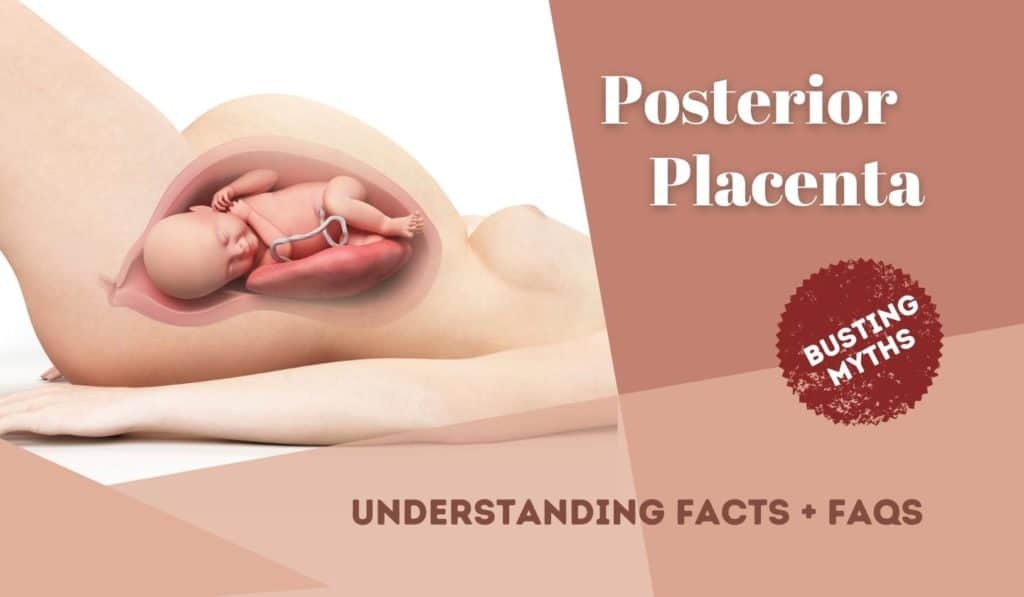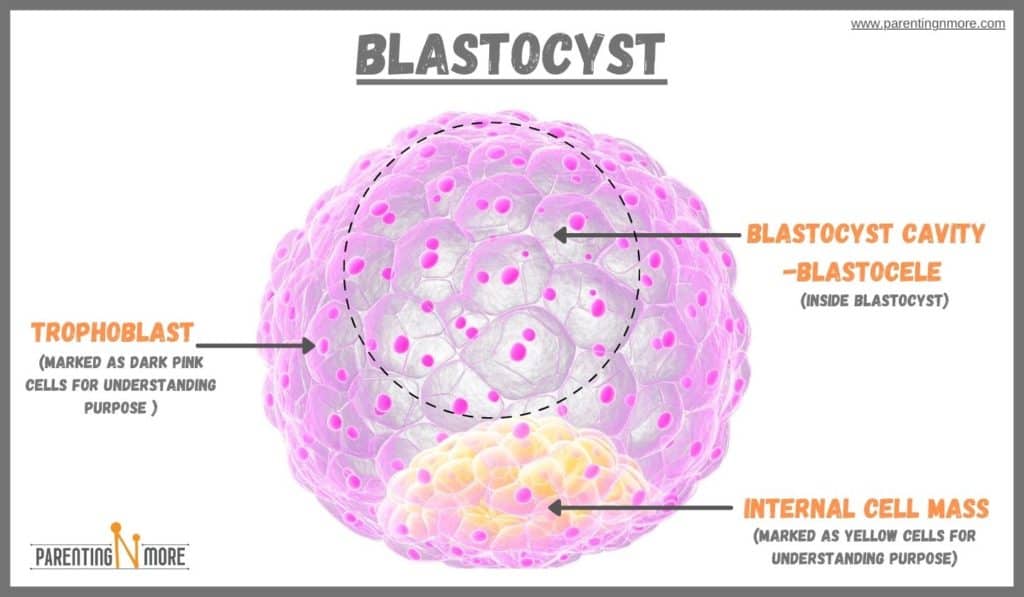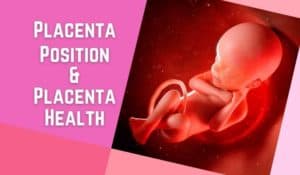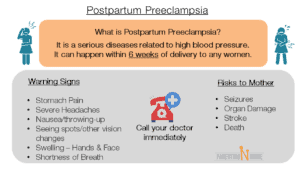Medically Reviewed by: Dr. Veena Shinde (M.D, D.G.O, PG – Assisted Reproductive Technology (ART) from Warick, UK) Mumbai, India
-
Author: Palak Thakkar
- >> Post Created: November 3, 2021
- >> Last Updated: May 8, 2024

Hey mom to be… congratulations on your journey so far. You already must be going through a lot of changes, a few are visible like weight, and baby bump, a few you can feel like – morning sickness, but there are many unseen wonders that are happening within your womb.
One of the major changes that happens within the womb is the growth of the placenta. This is the organ responsible for providing not only nutrition and oxygen via the umbilical cord but it also helps in removing the waste produced. Hence, the placenta is extremely important.
There are different positions in which the placenta is located within the uterus, commonly termed as a placenta position – like anterior placenta, placenta posterior, fundal placenta, or lateral placenta etc. The position of your placenta helps your OB and mid-wife understand and prepare you for the type of delivery you could expect.
In this article we will not only help you understand more about placenta posterior and what posterior placenta means, but also bust some myths around it along with some common FAQs around the subject.
Table of Contents
What are the various Placental development stages?
First let’s understand the various placental development stages, for a better understanding about the placenta posterior and other placental positions.
Placental Developmental stages – How does a placenta develop?

About 5–6 days after an egg has been fertilized it is also called as a blastocyst. This blastocyst gets divided rapidly into 2 parts. In the inside part, the cells rapidly multiply and develop into an embryo. Whereas the outer part of the blastocyst develops into cells that nourish and protect the embryo. The resulting outer cells are also known as the trophoblast, which slowly starts forming the placenta.
The trophoblast starts growing quickly and further splits into two layers. The inner layer of cells is called the cytotrophoblasts, whereas the outer layer of cells is called the syncytiotrophoblasts.
Now the cells within the placenta reshape the vessels carrying the blood within your uterus. And that’s how the placenta gets blood and in turn provides nutrition to your growing fetus.
How does placenta position itself within the uterus & understanding what placenta position means?
Once the egg is fertilized, it implants itself within the uterus. This determines the position of the placenta. Here are the 5 main different placenta position:
- Posterior Placenta means placenta positioned on the back wall of your uterus, closest to the spine
- Anterior Placenta means placenta positioned on the front wall of your uterus, closest to the belly
- Lateral Placenta means placenta positioned laterally – mainly means sides. So when the placenta is in the lateral position, it is either towards the right or left side of the uterine wall.
- Placenta Previa means placenta positioned down below near or directly on the cervix. It is also known as low-lying placenta.
- Fundal placenta means placenta which is Fundal. It basically means at the top. So when the placenta is positioned towards the top of the uterine wall.
All of the above various placenta position – are considered normal positions for the egg to get implanted in the uterine wall.
Common FAQs Placenta Posterior and Placenta Position:
What posterior placenta means and do I need to worry?
As mentioned before having posterior placenta means that your placenta is attached towards the back wall of your uterus.
Having a placenta posterior is completely normal and you need not be worried at all.
Having a placenta posterior also does not affect or interfere with the growth and development of your baby.
Does placenta position make any difference in terms of your child’s delivery?
Generally, placenta position don’t really make too much of a difference at the time of birth. Only placenta previa or a low-lying placenta can lead to complications while birthing cause your cervix gets covered with the placenta either partial or fully.
While there is nothing much that can be done if you are diagnosed with placenta previa, remember to follow your doctor’s instructions as they are the ones who will be helping you through your pregnancy. Trust their advice and judgment.
Read this next
Does it mean something different if you have a placenta posterior?
Few doctors say, having a placenta posterior means that moms could feel stronger baby movements; however, there is no conclusive research to support this claim.
Further, many doctors feel that having a placenta posterior can make a mother’s chance of having a natural birth higher as there is room for the baby to move and this allows baby to get into the right position just before birth to help in a vaginal birth.
Go for your regular checkups and you will sail through your pregnancy no matter what placental position you have.
Is posterior placenta normal?
Yes, most definitely by now you can conclude that having a placenta posterior is completely normal and you should not be worried at all in case you are diagnosed with same.
However, in case there is anything about the position of your baby or their movements that is not going as per your doctors briefing then please speak with your doctor or your mid-wife about the same. They will definitely help you.
What are posterior placenta complications?
In case your placenta posterior is wholly or partially covers your cervix, it could give rise to some of the following complications:
- Pre-term labor/birth: Low-lying placenta posterior could lead to baby’s birth before 40 weeks.
- Posterior Placenta previa could in certain scenarios lead to severe vaginal hemorrhage after child birth or in very rare scenarios it could increase risk of abortion earlier on.
- Placenta Posterior which is low-lying within the uterus could cause difficulty to the cervix to dilate during delivery.
Busting 5 myths about posterior placenta
Expecting parents often have queries about placental positions, the baby’s gender, the best position for a normal delivery, etc.
1. Posterior placenta & gender - Is Placenta posterior linked to gender of the fetus?
There are a few independent studies that have been carried out to understand if there is a correlation between the placenta position and the gender of the fetus, but there is no conclusive evidence done to cross verify or even prove the said studies in any of the medical journals.
Hence, the myth or the old wives tale about a possible link between posterior placenta and the gender of the fetus can debunked.
2. Placenta posterior heightens fetal movement:
Again a few reports do mention that majority of the women having a placenta posterior feel early and heightened fetal movements, but the lack of in depth study in the field is proof that the said claim as false.
3. Posterior placenta increases risk of preterm labor:
People have tried to substantiate this myth by giving the reasoning that because the back side of the uterine wall is thicker and longer, the placenta in such a position or placenta posterior may have a less efficient blood flow, increasing the chances of preterm labor.
However, the above is a myth and the same has not been substantiated by any national or international obstetrics guidelines. So we can safely say that it is just a myth.
4. Posterior placenta is the best position
Placenta posterior is an ideal position for the placenta to be in, as it allows more baby movements and can assists in the proper movement of the baby towards the birth canal before the birth.
However, calling it the best position will be a very strong statement to make without scientific evidence.
5. Posterior placenta impacts the chances of a normal delivery:
Any placenta position is a good position for a vaginal birth, except for Placenta Previa (placenta partially or fully covering the cervix) – which prevents the baby from moving down.
Go for your regular checkups, do your ultrasounds as advised by your doctor, and you can avoid most of the complications. Speak with your healthcare providers in case your feel anything not normal.
Final thoughts
The placental position is something that happens naturally in your body. There is nothing that you can do that will ensure that your placenta will be in a particular position that you want in the uterus. So rather than stressing about it, enjoy your pregnancy journey.
As you have already read that any placenta position is normal(except – placenta previa) and natural.
So don’t worry if you have posterior placenta/ placenta posterior. Even if you have placenta previa, keep an open mind and think positive. Regular visits to the doctor will ensure that you will have a smooth and complication-free pregnancy.
In the meantime, just enjoy the pregnancy glow.
Hope our article has helped address some of your most common queries on the subject like – What posterior placenta means?, Posterior placenta & Gender co-relations, How placenta develops, different placenta position – Posterior, Anterior, Fundal placenta etc. Do share your comments if you really liked our article and feel free to share your experiences – we would love to publish them.
Happy Pregnancy!








